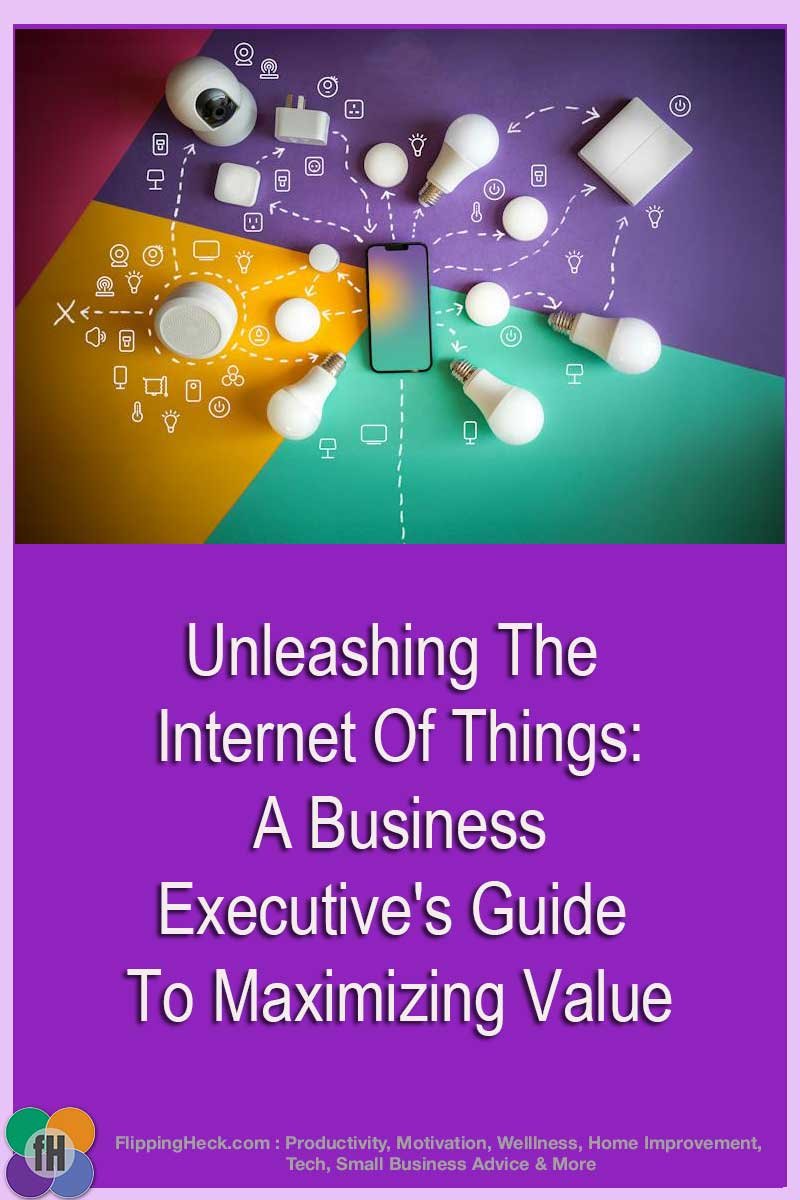Unleashing The Internet Of Things: A Business Executive’s Guide To Maximizing Value
The digital revolution has reached a new frontier: the interconnected world of the Internet of Things (IoT). No longer relegated to science fiction, IoT offers businesses across industries a transformative opportunity to optimize operations, unlock efficiencies, and gain a competitive edge.

The digital revolution has reached a new frontier: the interconnected world of the Internet of Things (IoT). No longer relegated to science fiction, IoT offers businesses across industries a transformative opportunity to optimize operations, unlock efficiencies, and gain a competitive edge.
This guide unpacks the potential of IoT for business executives, providing a roadmap for harnessing its power for tangible bottom-line impact.
Strategic Advantages Of IOT For Business
While cost reduction remains a critical benefit, IoT’s value proposition extends far beyond mere automation. It empowers businesses to:
Transform Data Into Strategic Insights
From production lines to customer interactions, IoT generates a continuous stream of valuable data. Employing advanced analytics, businesses can uncover marketing insights and predict trends, optimize resource allocation, and develop data-driven strategies for unparalleled agility and informed decision-making.
Imagine anticipating equipment failures before they occur, dynamically adjusting production based on real-time market data, or tailoring marketing campaigns for hyper-personalized customer engagement. These are not futuristic predictions; they are readily achievable realities with IoT.
Forge Deeper Customer Connections
In today’s experience-driven market, personalization is king. Businesses can utilize countless Internet of Things ideas to move beyond generic interactions and craft bespoke experiences that foster loyalty and brand advocacy.
Picture smart retail environments adjusting layouts and product displays based on real-time shopper preferences, hotels customizing comfort settings based on guest profiles, or healthcare providers delivering preventative care guided by continuous patient monitoring. These are not fanciful notions; they represent the ability to build long-term customer relationships through hyper-personalized interactions, securing a significant competitive advantage.
Fuel Disruptive Innovation
IoT acts as a catalyst for groundbreaking innovation, opening doors to previously unimaginable possibilities.
Envision agricultural sensors informing targeted irrigation and fertilization, wearable devices predicting and preventing chronic illnesses, or connected offices adapting to employee needs in real-time.
These are not distant dreams; they represent the tangible potential of leveraging IoT to disrupt established industries and create entirely new business models.
Strategic Approach To IoT Implementation
While the allure of IoT is undeniable, its successful adoption requires a prudent and strategic approach. Consider these key challenges:
Securing The Digital Frontier
The vast network of connected devices creates a tempting target for cyber threats. Robust cybersecurity measures, encompassing data encryption, access controls, and rigorous identity management, are essential to mitigate risks and safeguard sensitive information.
Scaling With Confidence
As the number of connected devices grows, ensuring seamless communication and data management can become complex. Businesses must design systems with scalability in mind, avoiding infrastructure bottlenecks and ensuring smooth operation throughout their growth journey.
Unifying The Digital Tapestry
Integrating new technologies with existing systems can be a logistical hurdle. Careful planning, comprehensive compatibility testing, and a phased implementation approach are crucial to avoid costly setbacks and ensure a smooth transition.
A Roadmap For Successful IoT Integration
Despite the challenges, the potential rewards of IoT far outweigh the risks. Here are some key steps for business executives to embrace this technology with confidence:
Identifying Strategic Objectives
Before embarking on an IoT journey, it’s essential to define specific business goals and desired outcomes. This ensures targeted implementation, maximizes return on investment, and prevents aimless technological pursuits.
Crafting A Visionary Roadmap
A well-defined roadmap acts as a guiding star, outlining key milestones, technology choices, resource allocation, and contingency plans. It ensures a smooth and efficient implementation process, preventing costly delays and other possible challenges.
Fostering Collaborative Innovation
Embracing IoT requires collaboration across departments, from IT and operations to marketing and customer service. A collaborative approach fosters knowledge sharing, diverse perspectives, and smoother implementation, leveraging the collective expertise of the organization.
Conclusion
The Internet of Things is not just a technological trend; it’s a strategic imperative for businesses seeking to thrive in the digital age.
By understanding its potential, navigating its challenges, and taking a data-driven and collaborative approach, business executives can unlock the power of IoT to optimize operations, drive customer engagement, fuel innovation, and secure a competitive edge in the ever-evolving digital landscape.

